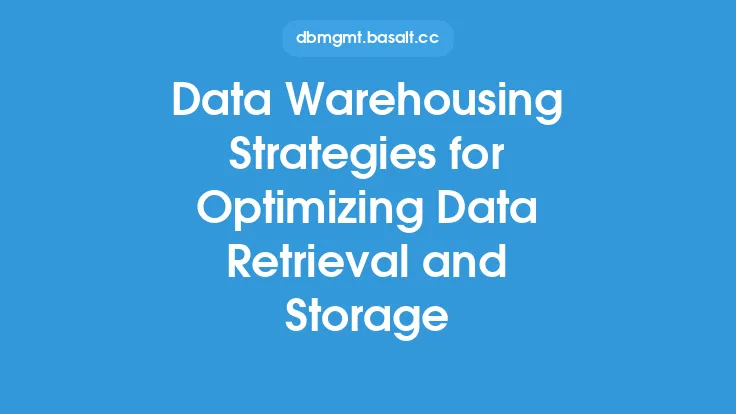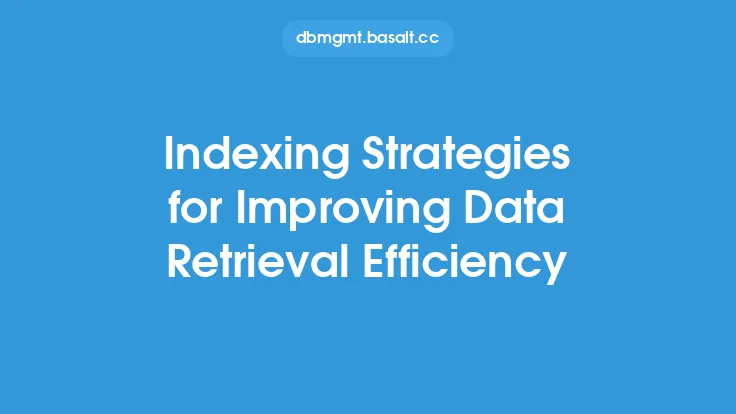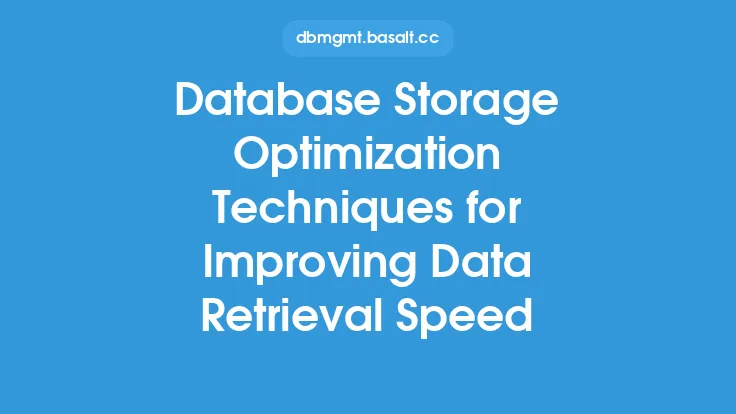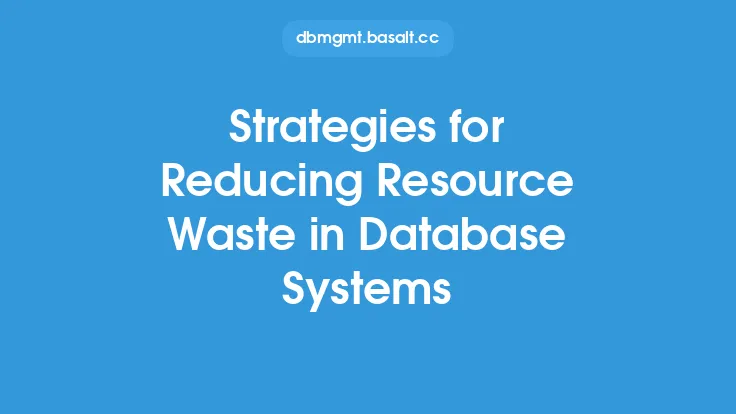Cache partitioning is a crucial aspect of database performance optimization, as it enables efficient data retrieval by dividing the cache into smaller, more manageable sections. This technique allows for better organization and utilization of cache resources, leading to improved system performance and reduced latency. In this article, we will delve into the world of cache partitioning strategies, exploring their benefits, types, and implementation techniques.
Introduction to Cache Partitioning
Cache partitioning involves dividing the cache into multiple partitions or segments, each containing a specific subset of data. This approach helps to reduce contention between different data sets, minimize cache thrashing, and improve overall cache hit rates. By partitioning the cache, database administrators can ensure that frequently accessed data is stored in a dedicated section, reducing the time it takes to retrieve the required information. Cache partitioning can be applied to various levels of cache, including level 1 (L1), level 2 (L2), and level 3 (L3) caches, as well as main memory and disk storage.
Types of Cache Partitioning Strategies
There are several cache partitioning strategies that can be employed, each with its own strengths and weaknesses. Some of the most common techniques include:
- Static Partitioning: This approach involves dividing the cache into fixed-size partitions, each containing a specific amount of data. Static partitioning is simple to implement but may lead to inefficient use of cache resources if the partitions are not properly sized.
- Dynamic Partitioning: In this approach, the cache is divided into variable-size partitions, which can be adjusted dynamically based on changing system requirements. Dynamic partitioning offers better flexibility and adaptability but can be more complex to implement.
- Hash-Based Partitioning: This technique uses a hash function to map data to specific cache partitions. Hash-based partitioning is useful for distributing data evenly across the cache and minimizing collisions.
- Range-Based Partitioning: In this approach, the cache is divided into partitions based on a specific range of values, such as a range of keys or indices. Range-based partitioning is useful for storing data that is frequently accessed together.
Benefits of Cache Partitioning
Cache partitioning offers several benefits, including:
- Improved Cache Hit Rates: By storing frequently accessed data in a dedicated partition, cache partitioning can improve cache hit rates, reducing the time it takes to retrieve the required information.
- Reduced Cache Thrashing: Cache partitioning helps to minimize cache thrashing, which occurs when multiple data sets contend for the same cache resources.
- Better Cache Utilization: Cache partitioning enables better utilization of cache resources, reducing waste and improving overall system performance.
- Increased Scalability: Cache partitioning can help to improve system scalability by allowing for more efficient use of cache resources as the system grows.
Implementation Techniques
Implementing cache partitioning requires careful consideration of several factors, including:
- Cache Size and Organization: The size and organization of the cache can significantly impact the effectiveness of cache partitioning. A well-designed cache can help to minimize contention and improve cache hit rates.
- Partition Size and Allocation: The size and allocation of partitions can also impact system performance. Partitions that are too small may lead to inefficient use of cache resources, while partitions that are too large may lead to contention and cache thrashing.
- Data Placement and Migration: The placement and migration of data within the cache can also impact system performance. Data should be placed in the most appropriate partition based on its access patterns and frequency.
- Cache Coherence and Consistency: Cache coherence and consistency are critical aspects of cache partitioning, ensuring that data is handled correctly and consistently across the system.
Challenges and Limitations
While cache partitioning offers several benefits, it also presents several challenges and limitations, including:
- Increased Complexity: Cache partitioning can add complexity to the system, requiring careful consideration of cache size, organization, and partition allocation.
- Cache Fragmentation: Cache fragmentation can occur when free cache space is broken into small, non-contiguous blocks, making it difficult to allocate large partitions.
- Partition Contention: Partition contention can occur when multiple data sets contend for the same partition, leading to cache thrashing and reduced system performance.
- Cache Invalidation: Cache invalidation can be challenging in a partitioned cache, requiring careful consideration of cache coherence and consistency.
Best Practices and Future Directions
To get the most out of cache partitioning, database administrators should follow best practices, including:
- Monitor Cache Performance: Monitor cache performance regularly to identify areas for improvement and optimize cache partitioning strategies.
- Optimize Cache Size and Organization: Optimize cache size and organization to minimize contention and improve cache hit rates.
- Use Adaptive Partitioning: Use adaptive partitioning techniques to adjust partition sizes and allocation dynamically based on changing system requirements.
- Implement Cache Coherence and Consistency: Implement cache coherence and consistency mechanisms to ensure that data is handled correctly and consistently across the system.
As database systems continue to evolve, cache partitioning strategies will play an increasingly important role in optimizing system performance and reducing latency. Future directions for cache partitioning include the use of machine learning and artificial intelligence to optimize cache partitioning strategies, as well as the development of new cache architectures and technologies that can better support cache partitioning.





